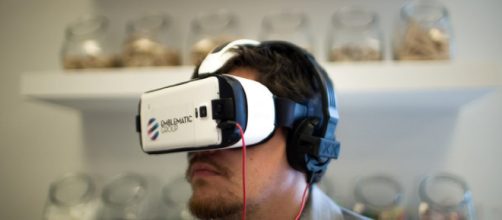Major technological advancements have been witnessed within the automotive industry in recent years and decades, in particular within advancements in lithium-ion technology and electric cars, with Tesla having dominated the market for years. Now Porsche, Volvo, Lamborghini and Even Dyson are fighting for dominance in the electric vehicle market.
It isn’t just the automotive industry that technology is moving forward. The field of science, in particular within the field of Psychology, has witnessed a rather formidable way of implementing technology that has been around for decades, to treat phobic disorders in patients.
Virtual Reality was first commercially introduced in the early and mid-90s in the gaming industry, with Nintendo launching Virtual Boy, though only after a few months on sale it was deemed a commercial failure and removed from production. As the years progressed technology further evolved allowing for the development of more reliable and sustainable VR head units, that have now successfully been launched onto the market by such developers as Steam. That being said, the use of Virtual Reality has in recent years shown promising results within the field of Psychology. in the treatment of phobias such as Arachnophobia (fear of spiders) and acrophobia (Fear Of Heights).
How does Virtual Reality graded therapy work?
The patient places a VR helmet that positions two goggle sized TV screens close to the subject’s eyes, to which each eye gets a slightly different image of the virtual world. The image shown on the left is slightly offset compared to the image on the right, and the brain fuses these two images to develop a single 3-D image; giving the user the illusion that the virtual environment around them has depth.
Tracking devices keep the computer informed of changes that occur in the user’s head and hand locations, therefore, the scenery in the virtual world changes as the patient moves their head around the environment. The whole essence of the experience is to provide the individual with the illusion that they are ‘there’ in the virtual world, interacting with their phobia and coming face to face with it.
Virtual Reality and its comparison to normal graded exposure therapy
Phobias are irrational fears that one possesses, a form of stimuli that an individual would fear in excess of the danger that it may actually pose towards them. The initial form of treatment is the use of Exposure Therapy, whereby treatment types such as Vivo Exposure that incorporates the use of flooding; and Systematic Desensitisation which is used to gradually expose the patient towards the fearful stimuli in step by step increments until that fear is no longer present.
Virtual Reality, however, is implemented within a similar principle in Vivo exposure, whereby patients are virtually exposed to their phobic stimuli. It can be incorporated with systematic desensitisation to virtually prepare the subject to feel comfortable in such a given scenario, before being exposed to the genuine phobia in the real world.
Research conducted by Garcia-Palacios et al who surveyed 777 undergraduate students. Over 81 percent of those participants preferred VR exposure treatment as opposed to ordinary Vivo exposure therapy in treating arachnophobia. In addition, research conducted by Rothbaum et al on the effectiveness of Virtual Reality graded exposure therapy for the treatment of acrophobia was also found to be far more superior in successfully treating patients with fear of heights.
Is Virtual Reality a successful form of treatment or just a tech gimmick?
VR in Psychology is still in the early stages and is merely integrated with current treatment types or a digital copy of one. But in the future, specifically tailored VR programmes can be developed to individually target and treat individual phobias in patients.
It is a new form of technology that has only recently seen effective use within the field of psychology. Its effectiveness has been shown to be far more superior than current treatment types. However, Virtual Reality therapy needs further refinement and within the next five years, we expect to see a wide usage of such treatment in the western world.


